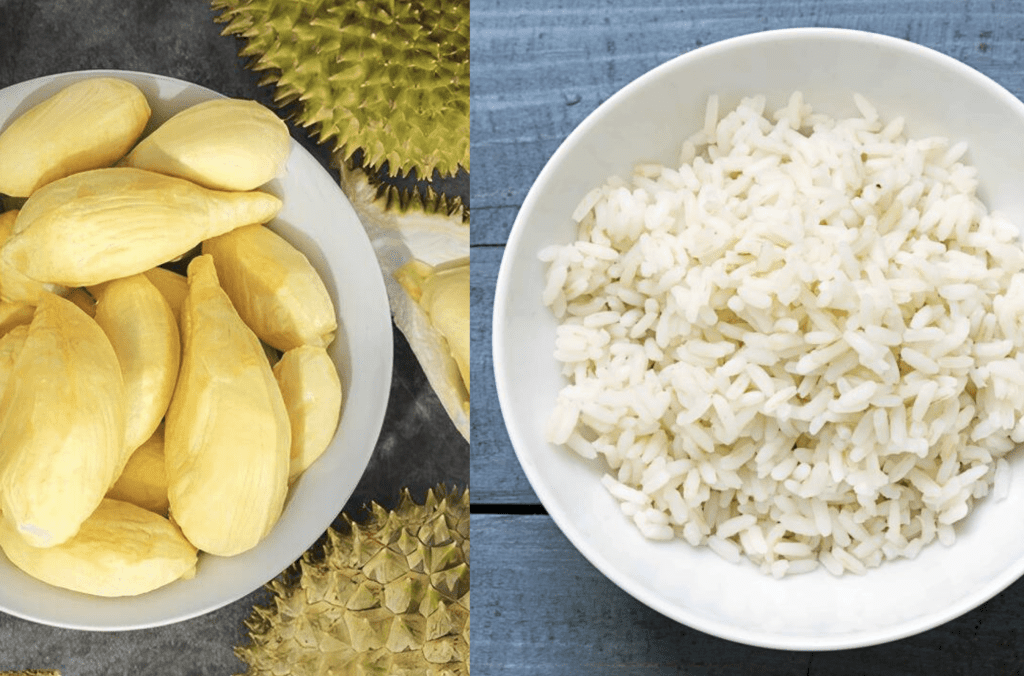The rice cooker clicks, its lid releasing a puff of steam. For many Malaysians, that sound is a comfort woven into daily life. It signals that food is ready, bowls will soon be filled, and conversation will flow around the table.
Rice has always been the anchor of Malaysian meals. Whether it’s eaten with fiery curries, stir-fried kangkung, or simply a fried egg and soy sauce, it is so ordinary that we often overlook its presence. Yet it is also extraordinary: Malaysians eat close to 80 kilos of rice per person each year, more than a sack a month for every individual[1].
Yet, for something so staple, we rarely ask where it comes from. Who grows it? What fragile systems deliver it to our kitchens? And what if one day the rice cooker clicks open to reveal nothing inside?
Agriculture’s Shrinking Slice Of The Pie
There was a time when agriculture shaped Malaysia’s destiny. In the 1970s, more than 20% of the national economy came from farming. Rubber estates stretched endlessly, paddy fields blanketed the north, fishing villages fed the coast, and rural families supplied fruits and vegetables to cities.
Today, agriculture accounts for only about 8% of the nation’s GDP[2]. Factories, highways, and high-rises now cover land once tilled, while Malaysia pursues industrialisation and digital growth. On paper, farming looks like a sunset industry.
But GDP doesn’t capture the whole picture. Around two million Malaysians, nearly 10% of the workforce, still depend on agriculture for their livelihoods[3]. They are the paddy farmers of Kedah, the pepper growers of Sarawak, the vegetable farmers of Cameron Highlands, and the durian smallholders of Raub.
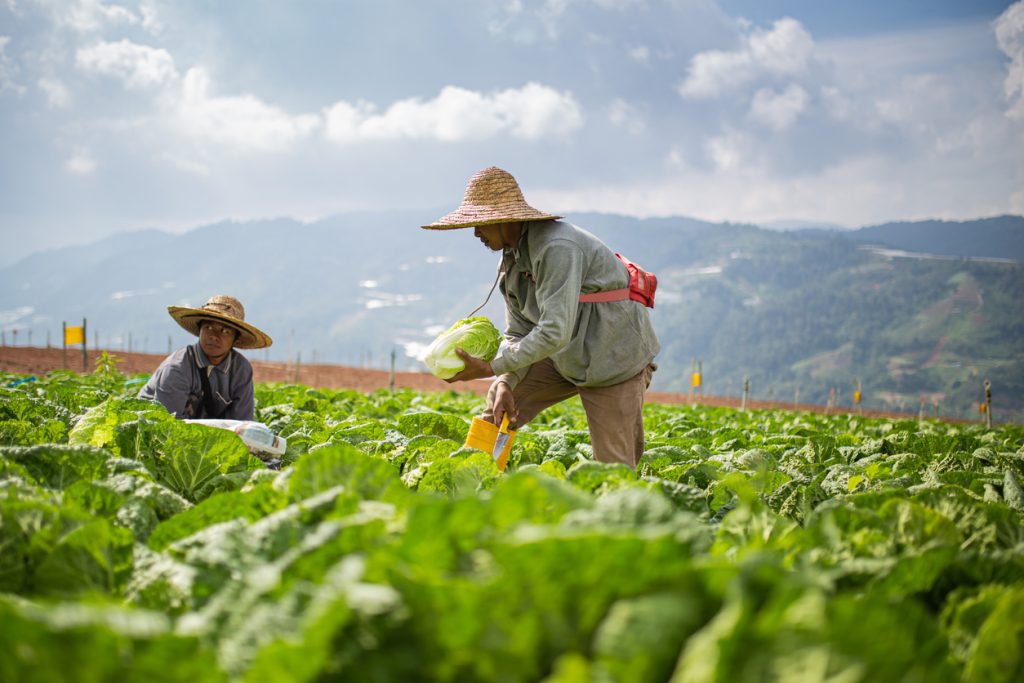
The Department of Statistics’ (DOSM) recent interim agricultural census put it plainly:
Although the contribution of agriculture has become smaller, the sector remains significant in ensuring the nation’s food supply and as a source of income. – DOSM, Interim Report Agriculture Census 2024[4].
Numbers may suggest decline, but food on the table is not measured by GDP.
Dependent On Others To Eat
If rice is the centre of our meals, how much of it do we grow ourselves? The uncomfortable answer: not enough.
Malaysia’s rice self-sufficiency ratio stood at just 62.6% in 2022. Put simply, nearly four out of ten bowls of rice in Malaysia are filled with imports[5].
The danger of this dependency became clear in 2023 when India restricted rice exports. Malaysia had to request an additional 500,000 tonnes to bridge the gap[6]. Suddenly, a policy decision made thousands of kilometres away rippled straight into Malaysian kitchens.
Vegetables tell a similar story. Only 45% of what we consume is grown locally. The broccoli, carrots and cabbage piled high in supermarkets are mostly imported. We fare better with tropical greens like okra, spinach and kangkung, where self-sufficiency is closer to 83%.
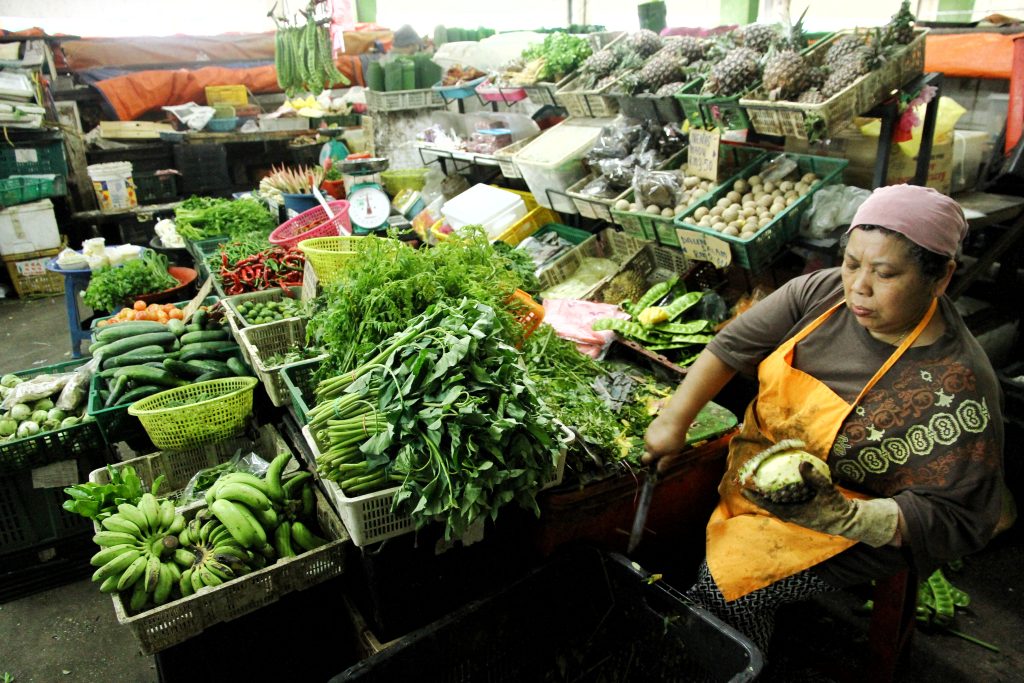
Protein supplies are uneven. Chicken and eggs are proudly local, making them the most reliable and affordable source of protein. But beef (14%) and milk (57%) are still heavily imported, leaving Malaysians vulnerable to price shocks[7].
As Yap Gin Bee stated in a Khazanah Research Institute paper,
Without robust food production, the domestic food supply chain would be highly dependent on importation, which, in turn, would leave the country vulnerable to food insecurity, particularly during times of food crises. – Yap Gin Bee, researcher[8]
The Ministry of Agriculture’s National Food Security Blueprint 2030 echoes the warning:
While trade helps bridge domestic production gaps, it also exposes Malaysia to risks such as supply shortages and price volatility during external shocks, geopolitical tensions, or climate-induced challenges. – Draft National Food Security Blueprint 2030[9]
Supermarket shelves may look abundant, but beneath that abundance lies fragility. The true question is not whether Malaysians have food today, but whether we will tomorrow.
The Farmers Carrying The Weight
To understand the stakes, you only need to walk the fields of Kedah.
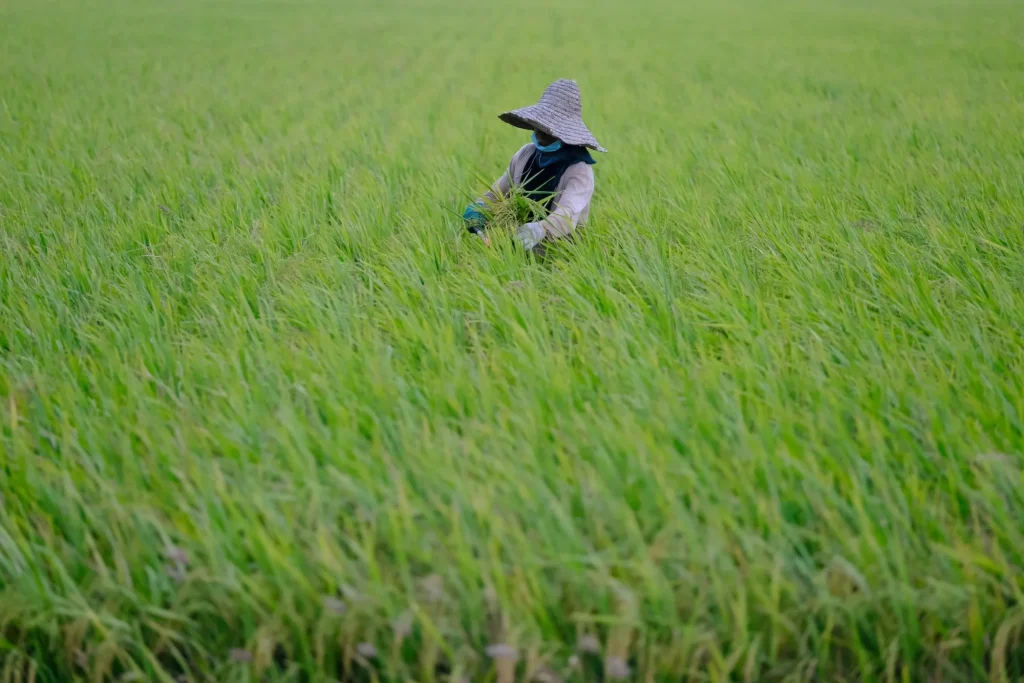
At dawn, 57-year-old farmer Puteh Hassan inspects her paddy plots. She has coaxed rice from this soil for decades, but now the seasons betray her. Floods arrive unseasonably, droughts stretch longer, and diseases strike without warning.
There was one season we were badly hit by bacterial blight, we lost 60% of our paddy. When it strikes, there’s nothing inside the husks… it’s empty. Climate change is really bad now; all kinds of natural disasters – rain, then water shortages. – Puteh Hassan, farmer[10]
Her struggles are not unique. Nearly two million Malaysians still farm, but most are smallholders on modest plots. They survive on thin margins, squeezed between rising costs and unpredictable yields.
Kedah farmer Mohd Rafirdaus Abu Bakar has tended 25 acres for 14 years. Yet he faces outdated seed supply, spiralling fertiliser prices and machinery costs, and inconsistent harvests.
They are still producing paddy seeds from 20 years ago … Their excuse is that the agriculture department does not want the same variety. But that is an old and lazy excuse. – Mohd Rafirdaus Abu Bakar, farmer[12]
Farmers like Rafirdaus and Puteh watch their children drift to the cities, seeking steadier jobs. The average paddy farmer is nearly 60[11]. If the next generation walks away, who will plant the fields?
Crops That Define Malaysia
Agriculture in Malaysia is not just about calories. It is about culture, identity and heritage. Each region has long been defined by its crops:
- Kedah: The “Rice Bowl of Malaysia,” producing nearly 40% of the country’s rice. However, unpredictable floods and disease outbreaks have significantly reduced yields[13,14].
- Sarawak: Producer of 98% of Malaysia’s black and white pepper, GI-protected since 2003. Yet farmers face erratic weather and fluctuating global prices[15].
- Sabah: Once a cocoa powerhouse, it now relies on tropical fruits like rambutan and mangosteen, although markets remain unstable. [16]
- Pahang: Home of the Musang King durian, a delicacy turned global brand. But land disputes in Raub pit smallholders against state authorities and corporations[17].
- Johor: Pineapples once built towns like Pekan Nanas. Today, heat stress forces farmers to shade fruit with “hats” against the scorching sun[18].
- Cameron Highlands: Famous for strawberries and vegetables, but rising temperatures and rainfall have sparked insect infestations, driving up pesticide use[19].
These crops are not just commodities. They are stories of people, landscapes and history. However, under climate stress, land pressures and global markets, each heritage faces an uncertain future.
The Future Of Farming
The central question is whether farming can capture the imagination of Malaysia’s young.
Right now, the answer is mixed. Many see it as gruelling work with little payoff. As MP of Bayan Baru, Penang, Sim Tze Tzin notes:
They must let more farmers access farmland. A lot of land is not being cultivated… short-term leases make serious investment impossible. Agriculture doesn’t give enough money, so it gets the anak tiri [stepchild] treatment. – Sim Tze Tzin, Bayan Baru MP[20]
Yet sparks of renewal exist. The SejaTi MADANI initiative provides up to RM100,000 in support for youth-led ventures. Projects range from catfish farms and kampung chicken rearing to drone services and sustainable cooking oil production. Officials argue it proves that with funding and land, young Malaysians are ready to step into agriculture.
Deputy Defence Minister Adly Zahari puts it this way:
As long as there are people, food will always be needed. We only need to enhance their knowledge and interest, including financial management, use of technology, as well as opening up more avenues for assistance and funding. – Adly Zahari, Deputy Defence Minister[21]
Sabah-based agro-entrepreneur Shahrizal Denci believes the key lies in changing the story Malaysians tell themselves about farming. The 43-year-old director of Bantu Tani Sdn Bhd warns that outdated perceptions of farmers as low-status labourers are pushing the agriculture sector toward decline.
We cannot keep treating farmers like labourers. Farmers must be recognised as entrepreneurs and professionals. – Shahrizal Denci, Director of Bantu Tani Sdn Bhd
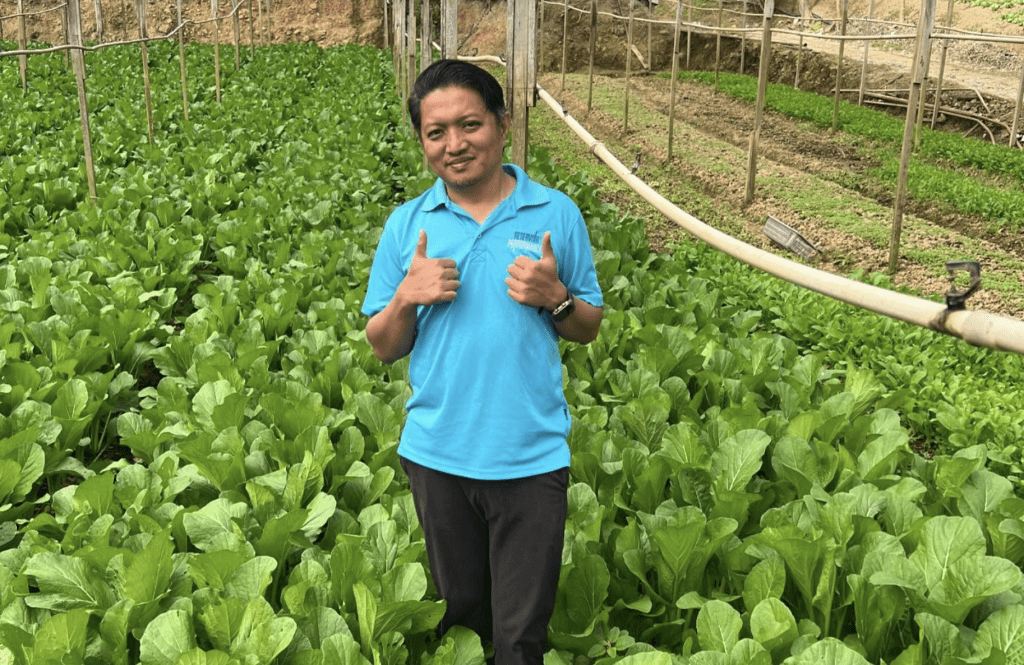
A former software engineer who left the city to return to his hometown in 2011, Shahrizal runs an 8-hectare farm in Kundasang, cultivating over 20 types of vegetables. He has made it his mission to show that farming can be modern, profitable, and even “sexy.” His approach fuses innovation with technology, from precision tools to smart management systems—but he insists that true transformation requires a mindset shift.
You must go into it as a business, not as a fallback plan. – Shahrizal Denci, Director of Bantu Tani Sdn Bhd[22]
It is a vision of agriculture that blends tradition with innovation, heritage with modern tools, rooted not in nostalgia, but in business opportunities.
Will Farming Fade or Flourish?
Malaysia stands at a crossroads. Agriculture can either be left to wither, remembered only as heritage, or be revitalised into a proud livelihood once again.
The decision will not be made in statistics or policy papers alone. It will be made in the muddy fields of Kedah, the pepper farms of Sarawak, the pineapple plots of Johor. It will be made in whether young Malaysians like Hariz see farming as a future worth building.
Rice cookers will continue to click open in homes across Malaysia. The question is whether those bowls will be filled with food grown by our own farmers or food shipped in from elsewhere.
Malaysia must decide whether to treat agriculture as an afterthought or as the living backbone of our survival. Because when the rice cooker clicks, it doesn’t just signal dinner. It asks a question: Who fed us? And will they still be there tomorrow?
Explore Our Sources:
- Serba Wangi Food. (2025). Key Facts. Information on the importance of rice crop. Link.
- World Bank Group. (2025). Agriculture, forestry, and fishing, value added (% of GDP) – Malaysia. Link.
- Chong, Yew, K. (2024). Farming the Future: Harvesting Malaysia’s Agricultural Resilience through Digital Technologies. Link.
- DOSM. (2024). Interim Report Agricultural Census 2023/24. Link.
- The Malaysian Insight. (2023). Malaysia’s rice self-sufficiency rate at 62.6% in 2022. Link.
- Reuters. (2024). Malaysia to request additional 500,000 metric tons of white rice from India. Link.
- CodeBlue. (2025). Malaysia Records 45% Vegetable Self-Sufficiency, Tropical Veggies At 83% SSR. Link.
- Yap, Gin, B. (2019). Food Supply Chain in Malaysia: Review of agricultural policies, public institutional set-up and food regulations. Link.
- CodeBlue. (2025). Malaysia’s Reliance On Imported Food, Agricultural Inputs Risks Supply Shortages, Price Volatility: KPKM. Link.
- Nina, M. (2025). The Future In A Grain: Malaysia’s Bet On Gene-edited Rice. Link.
- Ahmad, M, Z. (2021). Farmers struggle in the ‘rice bowl of Malaysia’. Link.
- Azalea, A. (2021). Make agriculture attractive among youths. The Malaysian Reserve. Link.
- Muhammad Basir, R. (2023). Meet Yon, One Of Muda Area’s Most Successful Young Farmers. Bernama. Link.
- The Straits Times. (2024). Farmers hit as large swathes of paddy fields damaged by floods in Malaysia. Link.
- Utusan Borneo. (2025). Sarawak remains the producer of high-quality black and white pepper. Link.
- Bernama. (2023). Sabah main producer of cocoa in Malaysia. Link.
- Danial, D. (2020). Raub durian farmers win reprieve as court halts eviction pending judicial review bid. Malay Mail. Link.
- Yee, X, Y. (2025). Special hats to fight fruit sunburn in Pekan Nanas. The Star. Link.
- John, B. (2023). With hot spell, Cameron Highlands farmers face new challenge: Pest infestation. Malay Mail. Link.
- Alifah, Z. (2025). Without Land Access And Farmer Support, Malaysia Can’t Make Healthy Meals Affordable. Link.
- Bernama. (2025). Youth Involvement In Agro Sector Signals Success Of SejaTi MADANI Initiative – Adly. Link.
- Free Malaysia Today. (2025). Change farming narrative, young agro-entrepreneur tells gov. Link.
